As a practicum student, I encouraged students to be patient and kind to themselves and others as they learned new concepts. All of the lessons and units I planned are delivered via open, non-judgmental group discussions, posited on positive teacher/student and student/student relationships and connections. Ideas and concepts were taught and learned experientially, through a mixture of explicit instruction, modelling, scaffolded support, practice, and student-doing. Student understanding was dependent upon their participation in, and attentiveness to, class and group discussions and to assigned tasks (done in class, with support as needed). Universal Design for Learning (UDL) was utilized to account for student diversity, allowing me to meet a broad range of student needs.
In this formative practicum, my coaching teacher and I worked together to ensure that our classroom was a place of equitable learning, one where everyone felt safe and confident in their ways of knowing and being. I planned lessons that would help me to gain meaningful insight into my students’ lives, so that I could really get to know them—their values, beliefs, likes, dislikes, interests, hobbies, strengths, and stretches. Students completed “About Me” wheels and had opportunities to share them with me and the class (if they were comfortable doing so). Students then used what they had discovered about themselves in their wheels to start exploring their future selves. This unit, which I titled “Present Me to Future Me” allowed students to focus on self, family, and their place in the community—now and into the future.
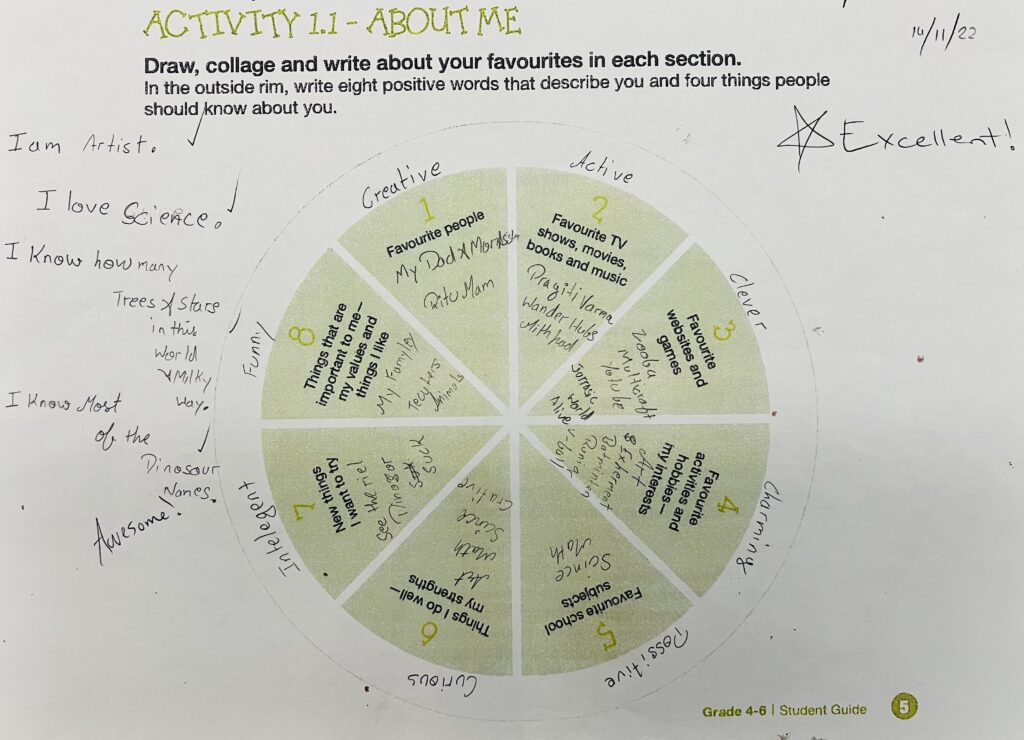
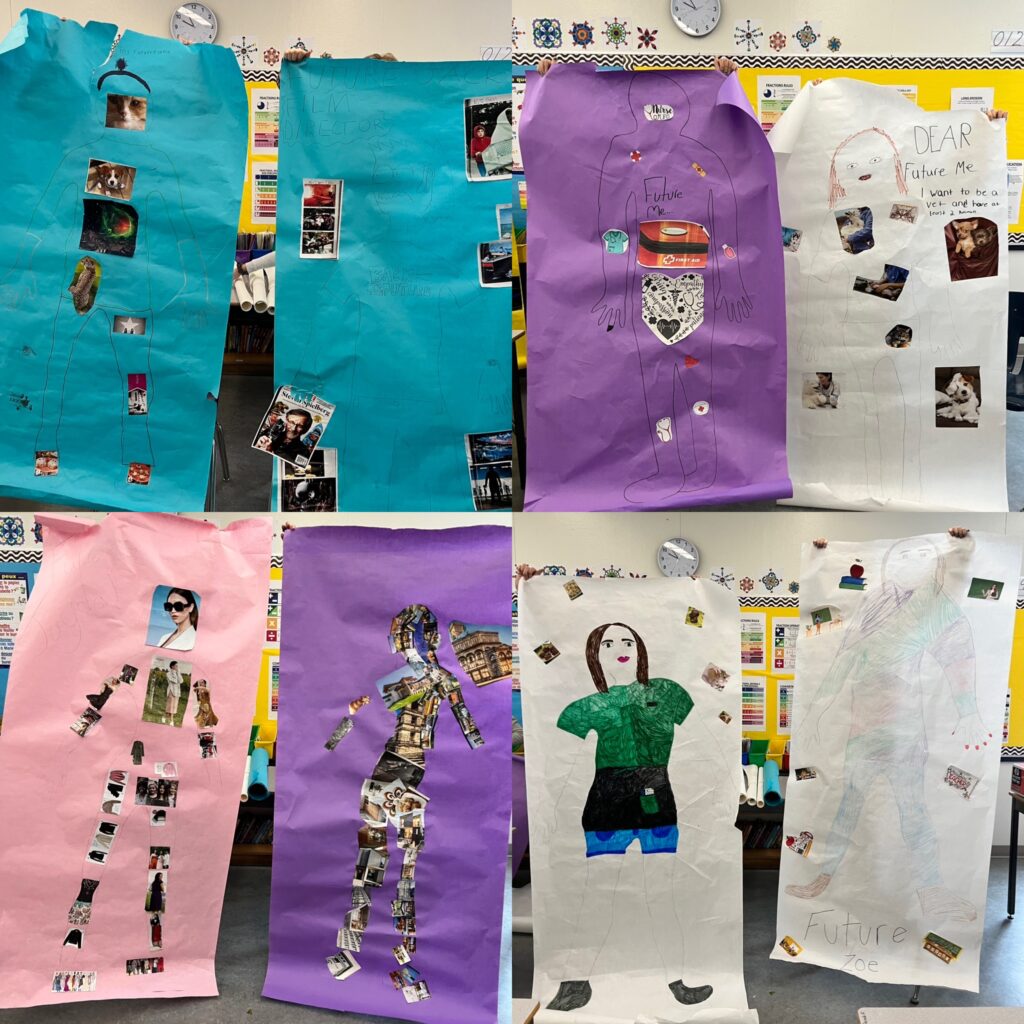
My coaching teacher and I also provided time and made outdoor opportunities a priority. We recognized that being on the land was critical to student learning. In my science unit, I made a concerted effort to bring in Indigenous perspectives. I got students outside (on the land) to explore space and our relationship within the universe and our Solar System. As a class, we discussed First Peoples’ perspectives of space and how Indigenous peoples have long looked to the sky for guidance and to help them predict and plan for change (in seasons, length of day, etc.).
Aside our students, my coaching teacher and I collectively co-constructed, engaged, and participated in experiential, place-based learning, wherein we explored the local “Wilde Trail”, observed different local trees, how they changed with the seasons, and how they could be identified by their bark, cones, and needles (or lack of).

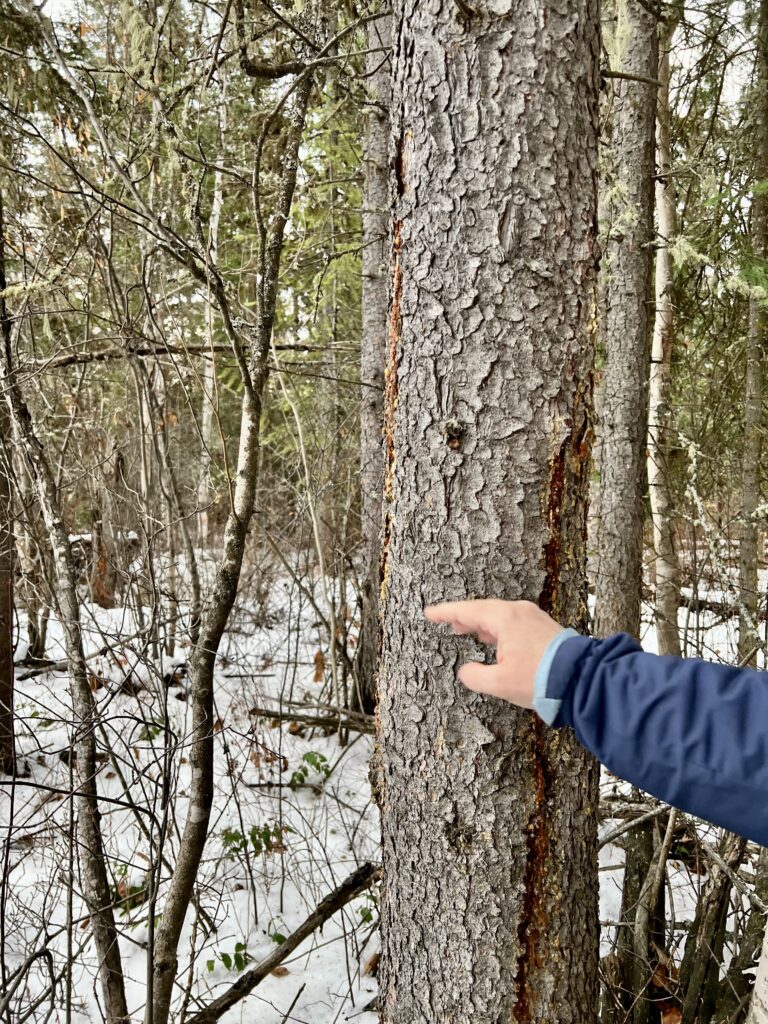
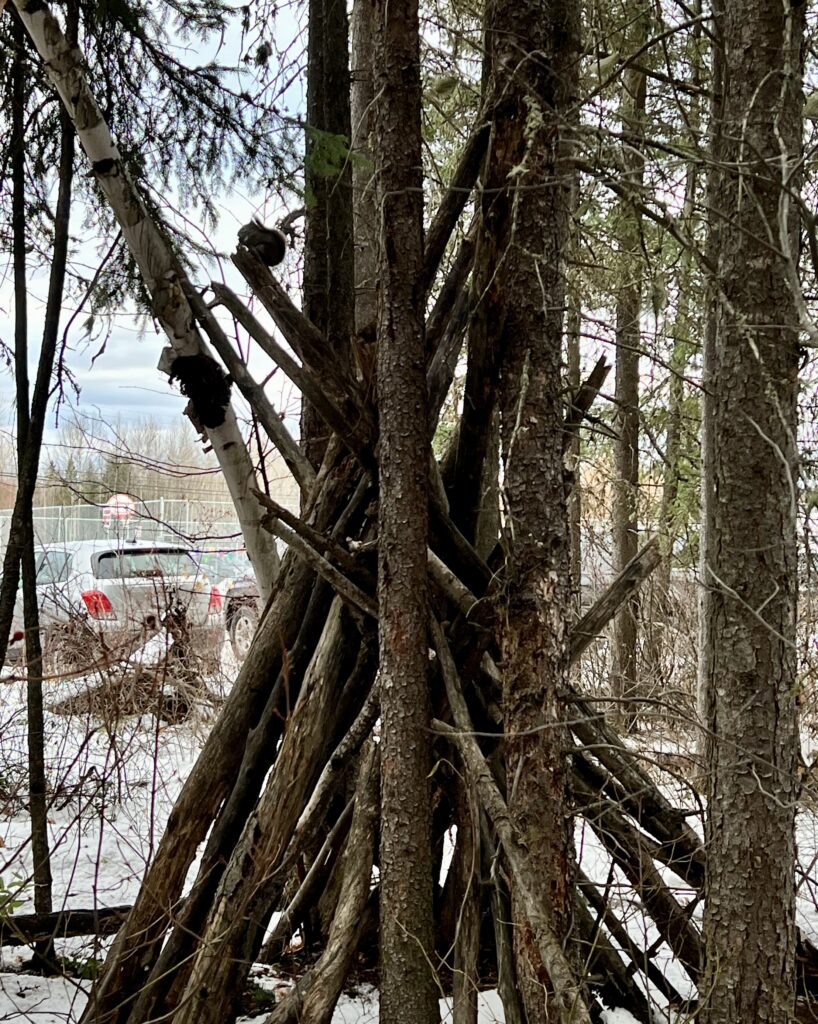
Students also had the opportunity to make bird feeders for the local birds and squirrels, using cones I picked from my yard.
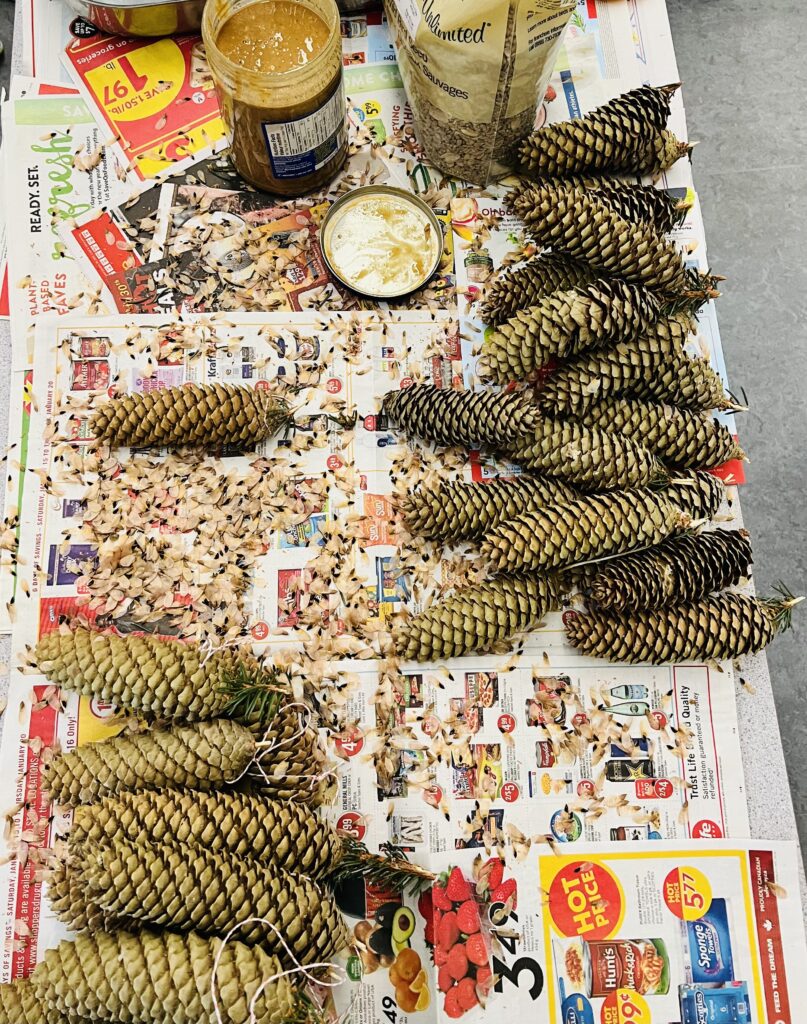
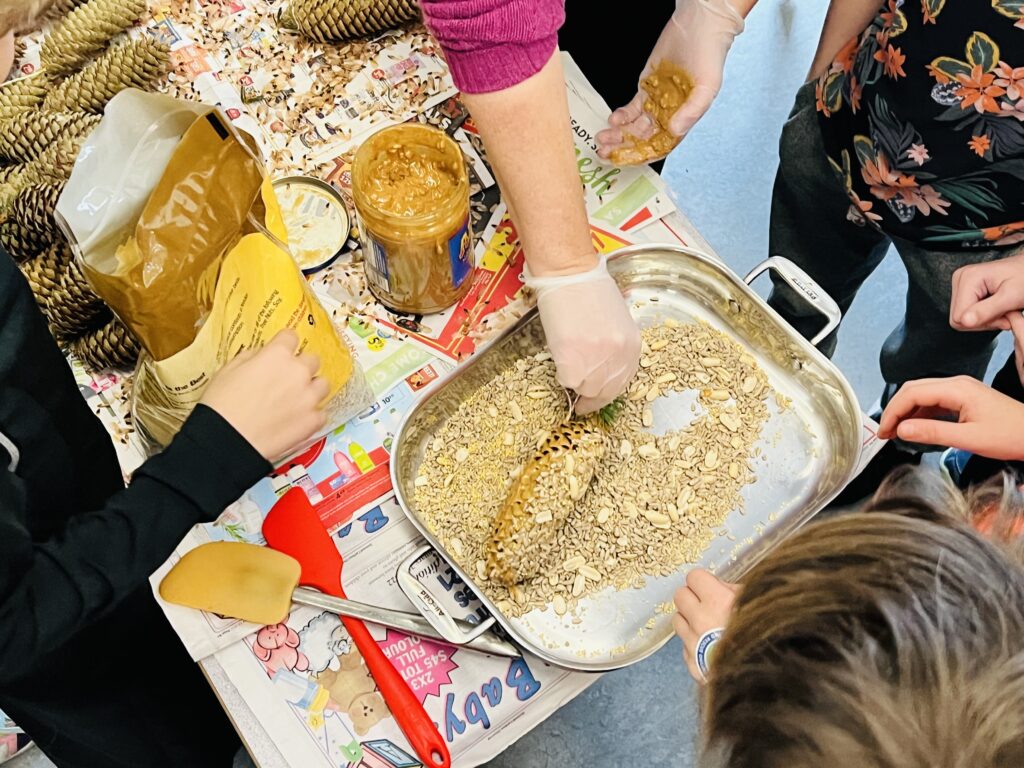
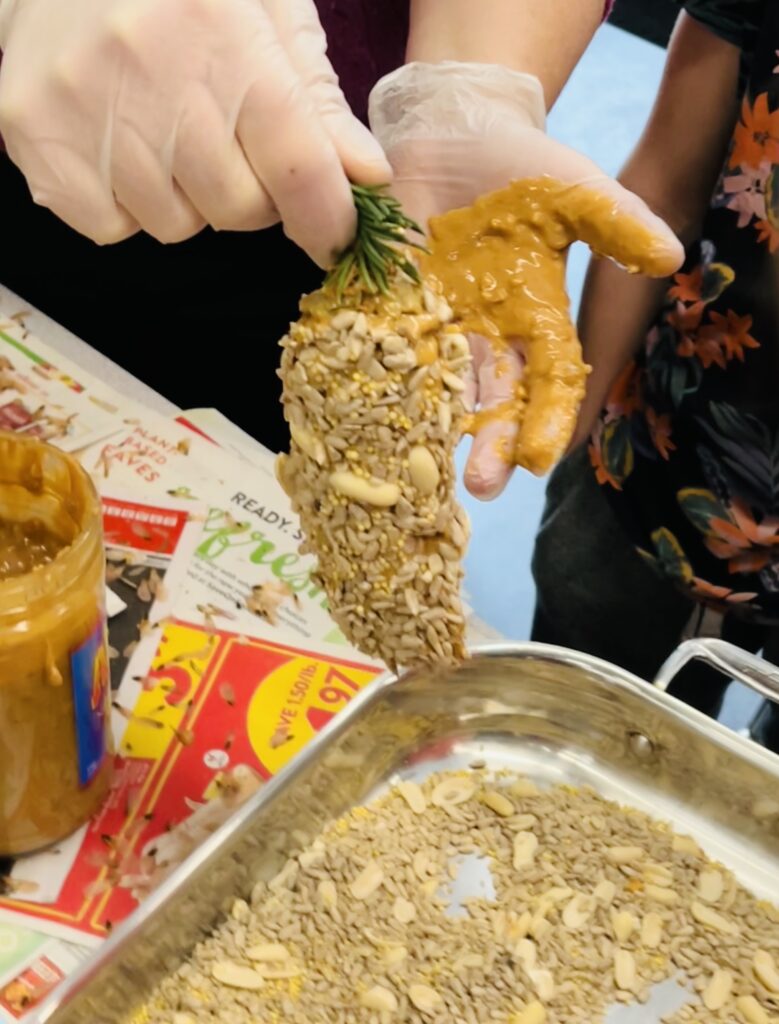
And, they participated in two Dakelh language and culture lessons, which were delivered by an Indigenous educator from our district, Ms. Arlene Horutko. Initially, my coaching teacher discussed cancelling these lessons (so as not to interfere with what I had planned for my practicum’s scope and sequence), but I was adamant that they continue as intended. I moved my lessons around and, alongside my students and coaching teacher, enjoyed learning about Indigenous knowledge, language, culture, and stories.
My coaching teacher and I also had the opportunity to attend our school district’s Indigenous Focus Day, wherein we joined together with all K-12 educators from our district to learn and grow in our collective understanding, knowledge, and application of Indigenous ways of knowing and being. It was a powerful day of communal learning that opened with a morning prayer from local elder, Ellie Peters, followed by Indigenous drumming and guest speaker, Kevin Lamoureux (Ensouling our Schools). Kevin spoke of the importance of Truth and Reconciliation and the 94 Calls to Action, specifically TRC 62.2: “providing teacher education on how to integrate and utilize Indigenous knowledge and teaching methods in classroom” (Truth and Reconciliation Commission of Canada). Kevin highlighted teachers and the important role they (we) play in moving society forward, toward a better future for ALL children. A future where schools are safer and happier places to learn (and teach). Kevin emphasized Dr. Martin Brokenleg’s Circle of Courage, its four quadrants of Belonging, Independence, Mastery, and Generosity, and how important they are to trauma-informed practice and “Mino-Pimatisiwin”—living in a good way. Kevin discussed how teachers must address all four quadrants, or core values, in order to create an environment where children can/will thrive.
Following Kevin’s speech, my coaching teacher and I joined the rest of our school in planning an Indigenous Culture Day, set to take place in the coming weeks. As a school, we discussed stations and activities ranging from Indigenous language games to Indigenous physical education games; from Indigenous stories and art to indigenous drumming and hoop dancing; as well as Bannock making. Then, in the afternoon, I had the pleasure of joining Doreen L’Hirondelle, District Principal of Aboriginal Education, as she continued the conversation and facilitated group dialogue regarding the importance of the Circle of Courage and how it can be brought into our classrooms going forward:
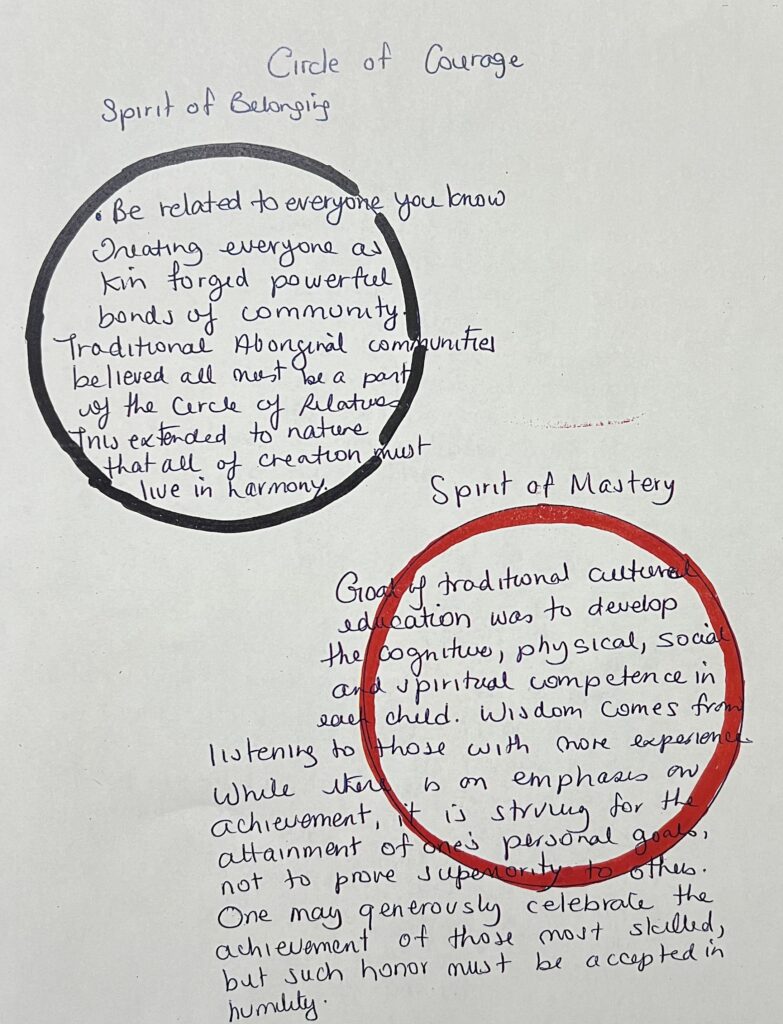

As a whole, my formative practicum was an enriching experience, one that honoured Standard 9, the First Peoples Principle of Learning, the 9 Rs, and Indigenous ways of knowing and being. I look forward to future Indigenous-focused learning in my summative practicum, and in my teaching career to come.
Together in Education,
Ms. H
Snachalhuya
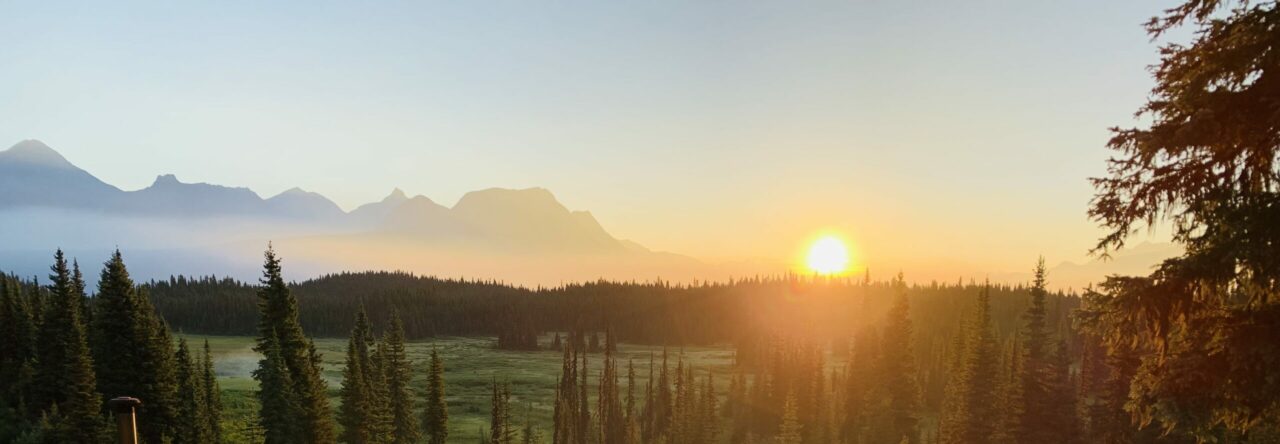
Leave a Reply